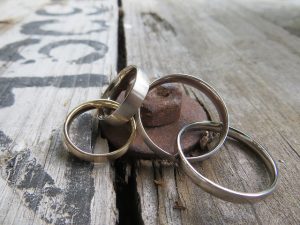Handmade jewelry is quite different from that of the other mass-products available in the market. There are different categories of handmade jewelry and every category requires special jewelry techniques. More and more people, nowadays, prefer handmade jewelry over the mass-produced jewelry. This is because of the techniques and uniqueness of the jewelry.
Jewelry Techniques
Some jewelry techniques that are rather nota ble include assembled, wire wrapped, fabricated, beaded, hand stamped jewelry and many more.
ble include assembled, wire wrapped, fabricated, beaded, hand stamped jewelry and many more.
Technique to Make Handmade Jewelry
Making handmade jewelry can be an exciting hobby. There are many techniques by which you can make handmade jewelry as well. For this, you will need the essential materials for each and every type of handmade jewelry. Besides that, you will need the tools too. Techniques can differ with the type of jewelry you opt for. Here are some of the types of handmade jewelry:
- Assembled jewelry making: The simplest yet trendiest type of handmade jewelry is the assembled jewelry. The technique is quite simple yet it offers a unique and personalized style. You can make necklaces, bracelets and earrings.
- Wire wrapped jewelry: Another technique of handmade jewelry is the wire wrapped ones. This type of jewelry is made up of wire wrapping around the stones and beads. They are simple in nature but it offers an intricate yet delicate design.
- Fabricated jewelry: This is another unique style of handmade jewelry. There are a wide range of styles that you can witness. The wildly creative art jewelry is fabricated with metal-smithing techniques.
- Beaded jewelry: This is another type of simple yet intricate jewelry design that depends a lot on the beads and string. Makers use the beads on the single strand to create different types of necklaces and bracelets.
- Hand stamped jewelry: This is one of the most popular techniques that can be easily used for making jewelry. Hand stamping allows the maker to create some personalized custom jewelry. It requires some specialized tools. The designs can be created with the help of hammering the metal stamp impression.
- Enameled jewelry: This handmade jewelry technique is best for adding some amazing pops of color. You can add some metal jewelry pieces with this type. One of the most popular enameled techniques is the torch-firing. This is a simple and affordable technique that can be used for soldering torch for heating up the enamel on the metal. You can also solder sterling silver as well to customize your jewelry.
Conclusion
You do not have to be highly skilled to make or design handmade jewelry. You can search for online videos on reliable sites that can show you some of the best and most amazing jewelry techniques. You can even learn some other nifty jewelry making tactics along the way such as how to remove super glue from plastic among many others. As long as you know the right techniques and have the correct materials to make jewelry, you can be amazed of how beautiful your work can be.


